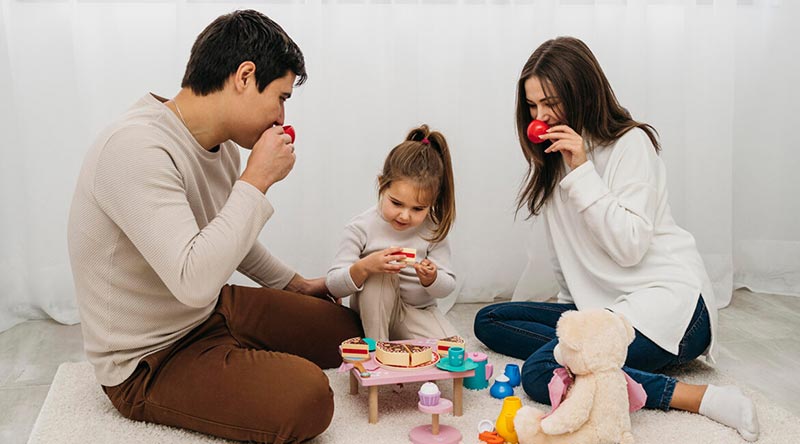Applied Behavior Analysis (ABA) is a type of therapeutic intervention that can improve social, communication, and learning skills through reinforcement techniques.
In addition to improving general adaptive behaviors, such as social skills, learning skills, it can focus on specific skill learning such as fine motor dexterity, hygiene, grooming, etc.
ABA is effective for both children and adults with psychological conditions in a variety of settings, including schools, homes, and clinics. It has also been shown that consistent ABA therapy can significantly improve positive skills and behaviors and decrease the need for special services in the future.
At Right Start Inc our ABA therapy programs can help:
● Improve language and communication skills
● Increase attention, focus, social skills, memory, and academics
● Reduce the occurrence of behavioral problems
Applied Behavior Analysis (ABA) is a type of therapy based on the psychology of learning and behavioral trades. ABA therapy applies the understanding of how behavior works in real-life situations, to increase behaviors that are helpful and decrease behaviors that are harmful or affect learning.
Applied Behavior Analysis involves several techniques for understanding and changing behavior. ABA is a form of flexible treatment that can be adapted to meet the needs of each unique person. It can also be provided in many different locations – at home, at school, and in the community. ABA therapy can involve one-to-one teaching or group instruction ABA therapy programs can help:
A qualified behavioral psychologist at Right Start Inc designs and directly oversees the program. They customize the ABA program to the child’s skills, needs, interests, preferences, and family circumstances.
Treatment goals are decided after taking into consideration the age and ability level of the child with autism. Goals can include different skill areas, such as:
● Communication and language
● Social skills
● Self-care behaviors
● Play and leisure
● Motor skills
5 Techniques Used in Applied Behavior Analysis
Applied Behavior Analysis involves several techniques to produce desired results in children who can benefit from behavior modification.
Here are five of those valuable techniques:
-
Positive Reinforcement
A child with special needs who face difficulties in learning or social interaction may not know how to respond in certain situations. One way to encourage positive social behaviors involves using positive reinforcement immediately to encourage the behavior in the future.
-
Negative Reinforcement
When maladaptive behaviors occur, the behavior needs to be corrected immediately. A good way to correct bad behavior is to remove a desired object or activity from the child. This is a form of non-aversive punishment. More importantly, negative reinforcement should be consistent for the child to understand the relevance of the action and consequence.
-
Using prompts and cues
Prompts are visual or verbal cues used to encourage a particular behavior. Verbal cues are gentle reminders while visual cues are even less direct and might be a gesture or a look of your eyes. The child will see this cue and be reminded to behave in a simple way. Examples could be taking their shoes off when walking into the house or washing their hands before a meal. The idea is to eventually fade out the prompts when the child no longer needs them. The prompts can be helpful because they are typically not intimidating or accusatory.
-
Task Analysis
This is an analysis model of current behavioral trends and actions to help learn about the child rather than correct or reinforce the behavior. The child psychologist gives the child a task and observes how they perform it. This analysis is broken down into a number of categories:
● Physical actions
● Cognitive actions
● Repetition
● Allocation
● Environment
Once the therapist has analyzed how the child performs tasks, this information is used to make other tasks easier for the particular child by breaking them down into steps that will be easily understood by the child.
-
Generalization
Through this model, the therapist takes what the child has learned in one instance and applies it to other instances. For example, if a child knows how to say the alphabet when singing it, the child psychologist can take their knowledge of the alphabet and try to apply it to teaching the child to spell out their name.
Children with special needs benefit the most from personalized and special assistance. Therapists who use applied behavior analysis use these particular techniques and others that help make children who need a little more help independent, well-adjusted and happy adult.
Applied Behavior Analysis Therapy At Home
Applied Behavior Analysis (ABA) is a well-recommended approach that you may use for your child diagnosed with Autism Spectrum Disorder. Not only is it the most used and preferred by parents, providers and ABA therapists, its results are proven to be an effective form of ABA intervention.
It is endorsed by the National Institutes of Health and the Association for Science in Autism Treatment and by the Surgeon General of the United States.
Applied Behavior Analysis therapy is a framework of interventions that address most of the behavioral problems that you may be encountering with your diagnosed child. It will help in the development of their language, social and everyday living skills using positive reinforcements.
If you consistently use ABA therapy over a period of time, you may see a significant improvement in your child’s social behaviors and lessening of challenging behaviors.
Parents, family members, and other care providers can use Applied Behavior Analysis techniques in the home setting. Research shows that early intervention for children with rightstartny.com has the highest chance of showing positive results.
As parents are the first teachers of their children, their impact is considerable to their development, so parents are urged to learn how to implement Applied Behavior Analysis therapy accurately and effectively.

